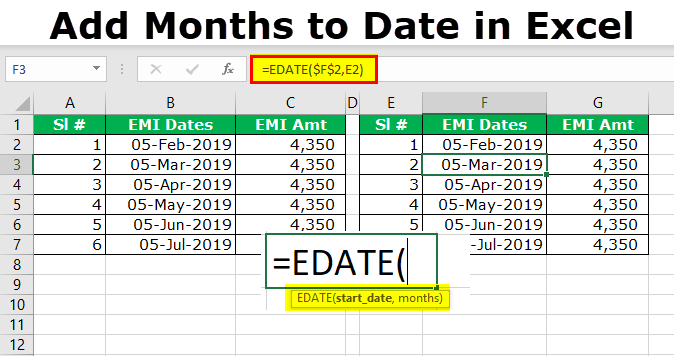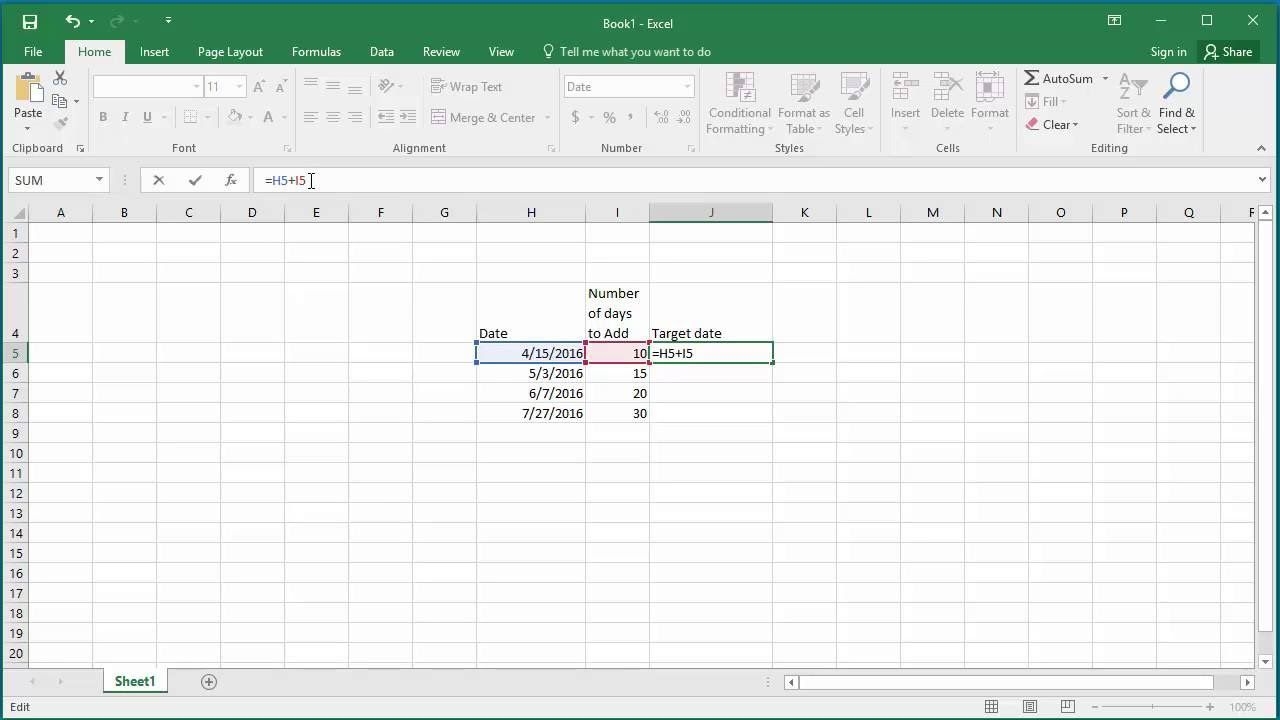

- Formula add days to date how to#
- Formula add days to date serial number#
- Formula add days to date plus#
A formula can contain several expressions. Run a rule based on a value calculated by using a formula.Įach XPath expression that is used in a formula is a combination of values, functions, and operators that evaluates to a single value. Set the default value of a field or control. Formulas can be used to do the following tasks:Ĭalculate mathematical values from values that you specify when designing the form template or values that users enter into controls when they fill out forms based on your form template.ĭisplay the values that users enter into one control in another control. Step 3: Change how the date is displayed in the text boxĪ formula is an XPath expression made up of values, fields or groups, functions, and operators used to calculate and display other values. Step 2: Insert a text box that contains the addDays function Step 1: Insert a date picker control that displays the current date by default
Formula add days to date how to#
This article explains how to add a specific number of days to a date and display the results in a control on a form by using the addDays and today functions. This establishes “14” as the day of the date in D2.You can use a formula in Microsoft Office InfoPath 2007 to automatically add a specific number of days to a date in a control on your form template. The RIGHT function looks at cell C2 and takes the first 2 characters starting from the very right and moving left. Because the formatting of D2 set to Date, the “0” isn’t included in the final result. This establishes “03” as the month of the converted date in cell D2. It starts at the 5th character, and then takes 2 characters to the right. This establishes “2014” as the year of the converted date in cell D2. The LEFT function looks at cell C2 and takes the first 4 characters from the left. To convert it into a date, the DATE function was used in conjunction with the LEFT, MID, and RIGHT functions. For example, in the following illustration, cell C2 contains a date that is in the format: YYYYMMDD. If this is the case, you can use the DATE function to convert the information into dates. This is may be because the numbers don't resemble a typical date, or because the data is formatted as text. But sometimes the dates aren't recognizable. If you open a file that came from another program, Excel will try to recognize dates within the data.
Formula add days to date serial number#
For example, DATE(2008,1,-15) returns the serial number representing December 16, 2007.
Formula add days to date plus#
If day is less than 1, day subtracts the magnitude that number of days, plus one, from the first day of the month specified. For example, DATE(2008,1,35) returns the serial number representing February 4, 2008. If day is greater than the number of days in the month specified, day adds that number of days to the first day in the month. A positive or negative integer representing the day of the month from 1 to 31. For example, DATE(2008,-3,2) returns the serial number representing September 2, 2007.ĭay Required.


If month is less than 1, month subtracts the magnitude of that number of months, plus 1, from the first month in the year specified. For example, DATE(2008,14,2) returns the serial number representing February 2, 2009.

If month is greater than 12, month adds that number of months to the first month in the year specified. A positive or negative integer representing the month of the year from 1 to 12 (January to December). If year is less than 0 or is 10000 or greater, Excel returns the #NUM! error value. If year is between 19 (inclusive), Excel uses that value as the year. If year is between 0 (zero) and 1899 (inclusive), Excel adds that value to 1900 to calculate the year. For example, "07" could mean "1907" or "2007." Four digit years prevent confusion. Tip: Use four digits for the year argument to prevent unwanted results.


 0 kommentar(er)
0 kommentar(er)
